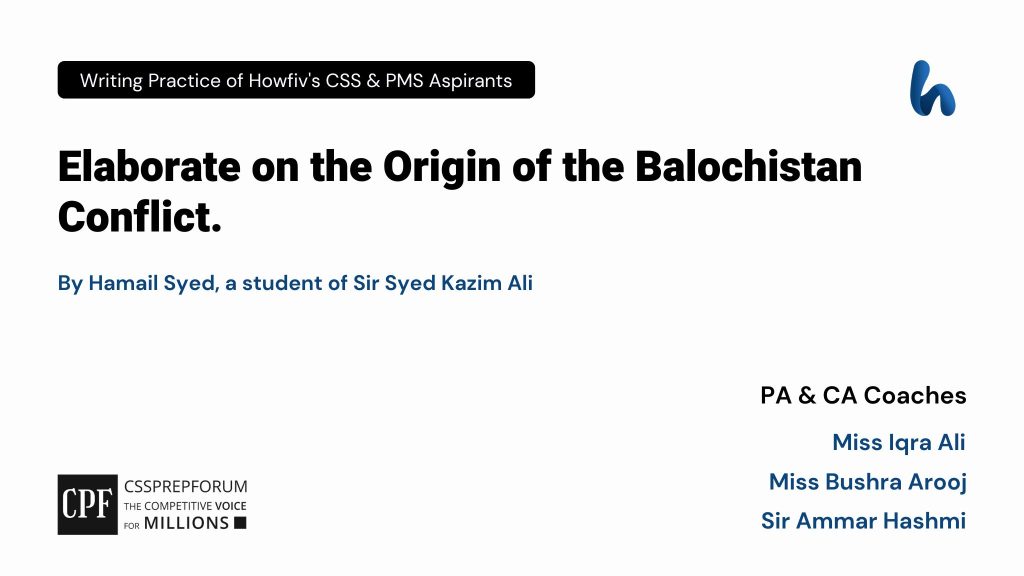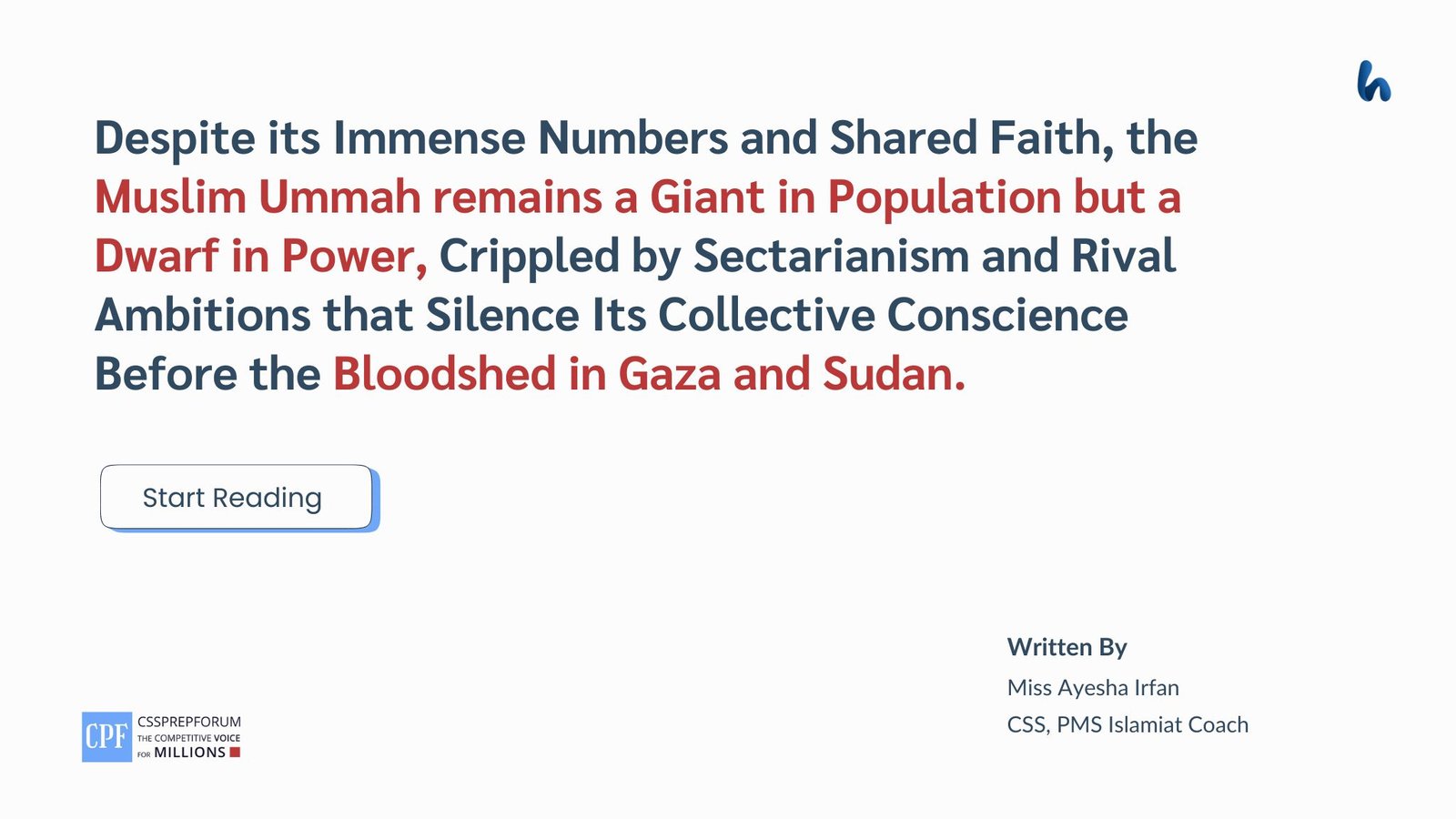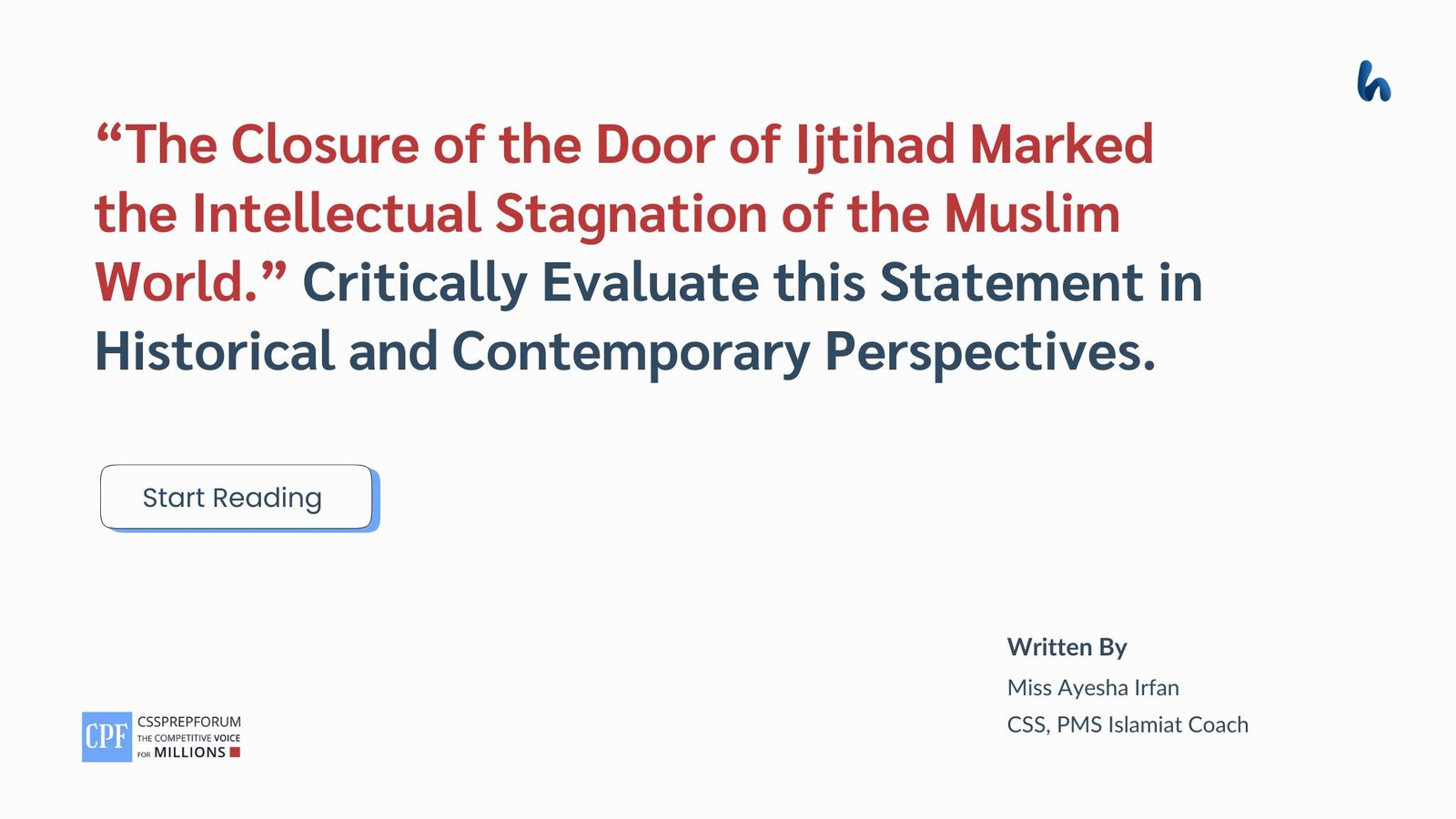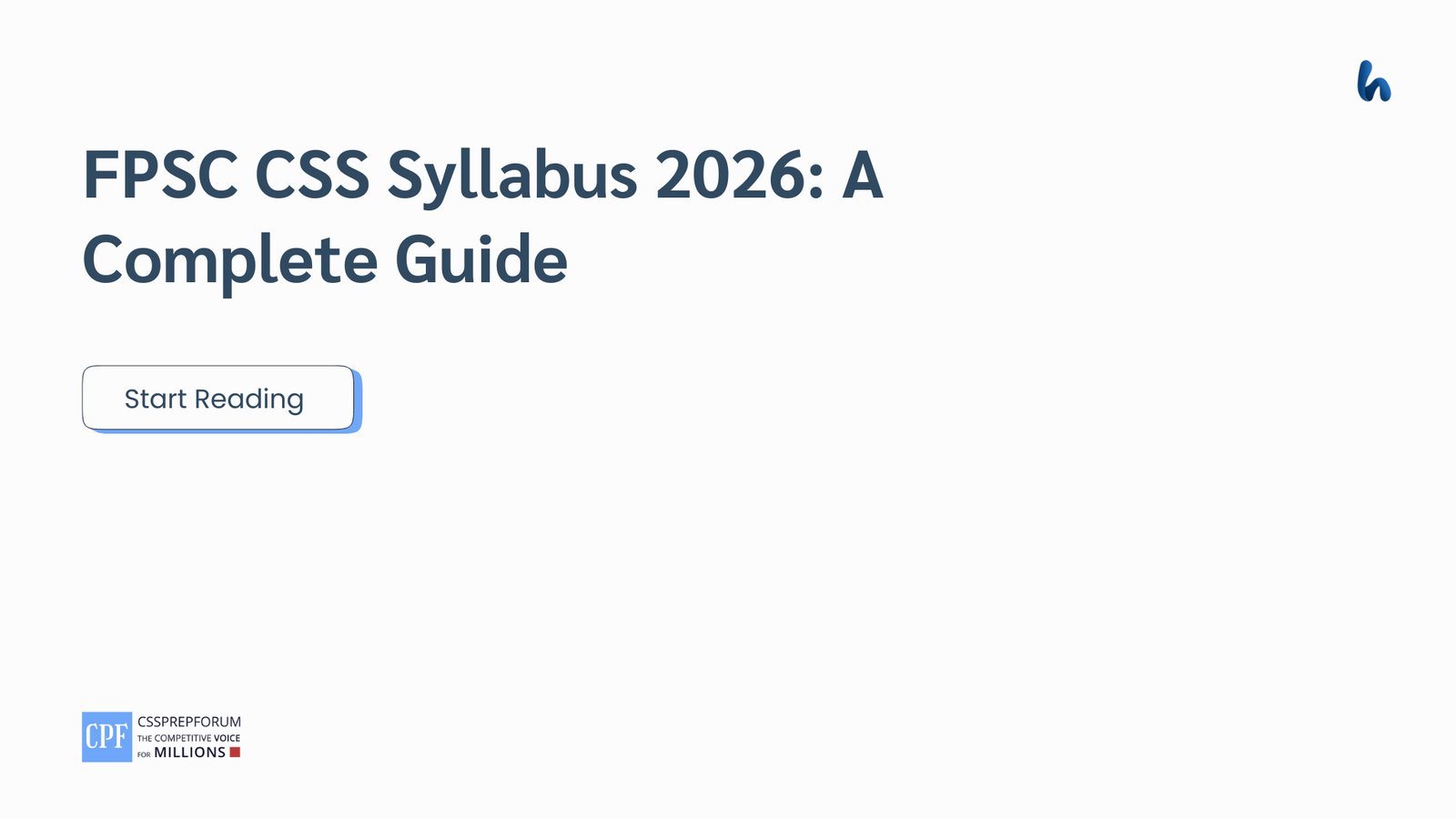CSS Current Affairs | Origin of the Balochistan Conflict
The following question of CSS Current Affairs is solved by Hamail Syed under the supervision of Howfiv’s Pakistan Affairs and Current Affairs Coaches. She learnt how to attempt 20 marks question and essay writing from Sir Syed Kazim Ali, Pakistan’s best CSS and PMS English essay and precis teacher with the highest success rate of his students. This solved past paper question is attempted on the pattern taught by Sir to his students, scoring the highest marks in compulsory and optional subjects for years, and uploaded to help aspirants understand how to crack a topic or question, how to write relevantly, what coherence is, and how to include and connect ideas, opinions, and suggestions to score the maximum.

Outline
1- Introduction
2-A glimpse at the current situation in Balochistan province
3-Expounding the origin of the Balochistan conflict
- ✓The historical origin of the Balochistan conflict
- The issue of accession
Evidence: According to the research article ‘Baloch Ethnicity: An Analysis of the Issue and Conflict with the State’ by Rehana Saeed Hashmi, “The younger brother of Khan organized the liberation movement and started guerrilla operations in Jhalawan district.”
- Enactment of the One Unit Scheme
Evidence: According to the Islamabad Policy Research Institute (I.P.R.I.) Journal, 2020, “Sardar of one of the main tribes of Balochistan, along with his 500 men, revolted against the government after the enactment of One Unit in the state.”
- Dominance of the Sardari system
Evidence: According to the think tank ‘the Institute of Strategic Studies Islamabad’ (I.S.S.I.), “In Balochistan, the Sardars oppose establishing schools in areas under their control, and some are against providing electricity in their respective areas.”
- Issue of less representation
Evidence: According to the research article ‘Baloch Ethnicity: An Analysis of the Issue and Conflict with the State’ by Rehana Saeed Hashmi, “In the Central Cabinet, there were only 4 Baloch persons from 1947 to 1970.”
- ✓Contemporary drivers of the conflict
- Sense of deprivation
Evidence: According to the research article ‘Crisis in Balochistan: Challenges and Opportunities,’ by Sher Baz Khetran, “With the establishment of a gas field in Sui, Balochistan, in 1952, out of 30 of its districts, only 4 receive gas, while 83% of gas has been diverted to other provinces.”
- Marginalization of Baloch
For example, Chinese engineers and labourers from other provinces are working on the mega project of Gawadar port; however, a few Balochs are included in this massive project.
- Foreign involvement in Balochistan
Evidence: According to the research article ‘Indian Interference in Balochistan,’ by Mir Sherbaz Khetran, “Khulbushan Yadev, an India Naval Officer and a spy for Indian intelligence agencies, revealed his funding and plan to destabilize Balochistan and Karachi by fueling separatist movements.”
- Exploitation of resources
Evidence: According to the research article ‘Conflict in Balochistan: Natural Resources and the Way Forwards,’ by Maliha Tariq, “Saindak, a copper extraction project by a Chinese company, gave 50% of the profit to China, 48% to the Pakistani government, and only 2% to Balochistan.”
4-Recommendations to alleviate the conflicts in Balochistan
- ✓To increase the representation of the Baloch in the political and economic sectors
- ✓To increase the profit share of Balochistan in a developmental project
5-Critical analysis
6-Conclusion

Answer to the Question
Introduction
Despite having the potential to become an economic hub for Pakistan, Balochistan, the largest and most resourceful province of Pakistan, is entangled in a web of economic, political, and social crises, leading to liberation movements in the province. Unfortunately, Balochistan has been a conflicting province since 1948. Basically, there are many historical and contemporary reasons that trigger conflict in the province, such as the One Unit scheme, a few representations of the Baloch in the political arena, exploitation of resources, and a sense of deprivation. Apart from that, owing to weak government policies, the Sardari system, and foreign involvement in fanning separatist movements, Balochistan has remained a marginalized province of the country, causing conflicts and disputes. Additionally, though the government of Pakistan has been making efforts to foster national integration and alleviate the problems of the people of Balochistan, the province is still entrapped in the vicious cycle of economic declivity, as these reforms are like a drop in the ocean. The fact highlights the need for the government to introduce more substantial reforms and robust steps to mitigate the separatist movements by addressing the problems and reservations of the people in Balochistan.
A glimpse at the current situation in Balochistan province
In addition, Balochistan is the largest province of Pakistan, covering 43% of Pakistan’s total land area. Basically, the province is located at the crossroads of South Asia, Central Asia, and the Middle East, increasing the geo-strategic importance of Pakistan. Furthermore, the land of Balochistan is rich in mineral resources; for instance, one of the world’s biggest copper deposits is present at RekoDiq in Chaghi, Balochistan. Unfortunately, Balochistan is still an impoverished province of Pakistan, even in the 21st century, despite having the potential to become an economic hub. Certainly, it is the poorest province, with less population than the rest of the provinces. Additionally, due to poor governance, sectarianism, and the Zardari system, backwardness prevails in the province. As a result, the people of Balochistan are still entangled in a web of political, economic, and social crises. Regrettably, the Baloch people are grappling with poverty. According to the World Bank Report 2019, “The poverty rate in Balochistan is 42%.” This fact shows that the standard of living is lower in Balochistan, as people’s purchasing power is less. Moreover, they do not have proper education and healthcare facilities. Besides that, they are deprived of basic facilities such as electricity, gas, and water, which is frustrating for the Baloch people. Consequently, Baloch nationalists started separatist movements in the province, undermining the peace and stability of the state. In short, feelings of hatred among the Balochs for the government due to their suffering trigger the vicious cycle of liberation and separatist movements in Balochistan.
Expounding the origin of the Balochistan conflict
The above-discussed gloomy situation in Balochistan does not develop automatically; certainly, there are many origins of the Balochistan conflict responsible for deteriorating the situation. Here, light has been shed on some of the major historical and contemporary conflict drivers.
The historical origin of the Balochistan conflict
- The issue of accession
To begin with, after the integration of the Kalat state into Pakistan, unrest started in Balochistan as the Kalat state wanted to become independent. Basically, during the partition of the subcontinent, Kalat, a princely state, had to decide its fate. The Khan of Kalat declared independence in 1947, rejecting the idea of accession to India and Pakistan. However, Kalat acceded to Pakistan on March 27, 1948, after a series of negotiations between Ahmed Yar Khan and Quaid-e-Azam. Moreover, when Ahmed Yar Khan signed the instrument of accession with Pakistan contrary to the wishes of his state’s legislature, the revolt started in Balochistan. According to the research article ‘Baloch Ethnicity: An Analysis of the Issue and Conflict with the State’ by Rehana Saeed Hashmi, “The younger brother of Khan organized the liberation movement and started guerrilla operations in Jhalawan district.” This fact signifies that liberation movements started in Balochistan at the start of independence. Thus, the unwillingness of the Kalat state to merge with Pakistan is a prime factor that triggers conflicts in Balochistan.
- Enactment of the One Unit Scheme
Next, after the enactment of the One Unit program in Pakistan, a series of political and armistice struggles began in Balochistan. Basically, in 1955, to remove the differences between East and West Pakistan, the One Unit system was introduced by Muhammad Ali Bogra, a Prime Minister of Pakistan, merging the four provinces of West Pakistan into a single unit. Moreover, Baloch representatives were apprehensive about the political control of Punjab under One Unit. This was due to the fact that traditionally, Punjab, N.W.F.P., and Sindh had major chunks in politics, which resulted in the marginalization of Balochistan and widening mistrust between Balochistan and the federal government of Pakistan. Further, as Baloch nationalists felt that the One Unit scheme would compromise the autonomy of Balochistan, the revolts were started in Balochistan by Baloch nationalists. According to the Islamabad Policy Research Institute (I.P.R.I.) Journal, 2020, “Sardar of one of the main tribes of Balochistan, along with his 500 men, revolted against the government after the enactment of One Unit in the state.” This fact highlights that the conflict in Balochistan erupted due to the unit policy of the government, putting at stake the national integrity of the country. Hence, the One United System is one of the vital elements that causes conflicts in Balochistan.
- Dominance of the Sardari system
Additionally, undoubtedly, the Baloch grievance is the backwardness, underdevelopment, deprivation, and violation of basic human rights in Balochistan, which links back to the Sardari system, stirring up anti-national movements. Actually, the sardars in the province enjoy unlimited authority and maintain dominance over poor citizens without being held accountable in any forum. Moreover, they forcefully make decisions about the lives of the masses to maintain their hegemony. According to the think tank ‘the Institute of Strategic Studies Islamabad’ (I.S.S.I.), “In Balochistan, the Sardars oppose establishing schools in areas under their control, and some are against providing electricity in their respective areas.” The fact signifies that Sardars limit the provision of basic human rights in the province because they want to make people dependent on them, thus making Balochistan lag behind other provinces of Pakistan and provoking anti-state feelings in youth because of the deprivation of basic human rights. Hence, the Sardar system is one of the prime origins of the Balochistani conflict.
- Issue of less representation
Lastly, less representation of Baloch people in every sector of the state is another vital driver of conflicts in the province. Certainly, the representation of Baloch nationals in politics was lower in the past. According to the research article ‘Baloch Ethnicity: An Analysis of the Issue and Conflict with the State’ by Rehana Saeed Hashmi, “In the Central Cabinet, there were only 4 Baloch persons from 1947 to 1970. Likewise, there were hardly any Balochs in the top ranks.” This fact shows that there was unequal representation of provinces in the government and other sectors, leading to the separatist movements. Unfortunately, Baloch had reservations about their representation in bureaucracy, politics, and the military, making them feel alienated. In short, the issue of less representation is an important cause of conflicts in Balochistan.
Contemporary drivers of the conflict
- Sense of deprivation
Delving into the contemporary causes of the Balochistan conflict, a sense of deprivation is the main cause of dispute. Certainly, Balochistan is rich in natural resources, yet the people of Balochistan do not have ample utility facilities like gas, electricity, and water. According to the research article ‘Crisis in Balochistan: Challenges and Opportunities,’ by Sher Baz Khetran, “Although in 1952, a gas field was established in Sui, Balochistan, out of 30 districts in Balochistan, only 4 receive gas, while 83% of gas has been diverted to other provinces.” This fact depicts that the people of Balochistan cannot enjoy the fruits of their resourceful land, developing a sense of deprivation. This feeling of being alienated triggers Baloch nationalists to start liberation and separatist movements, deteriorating the peace and prosperity of the state. Evidently, Baloch nationalists previously attacked gas pipelines, which resulted in the cutoff of power to major cities, depicting their dissent over the deprivation of the province of its basic needs. To sum up, the unavailability of basic resources in the province creates a sense of deprivation among the Baloch, disrupting the peace in Balochistan.
- Marginalization of Baloch
Another element that triggers conflict in Balochistan is the construction of Gawadar Port, which does not include Baloch nationals. Basically, Chinese projects under the China-Pakistan Economic Corridors (C.P.E.C.) are going on in Balochistan, intending to make Gawadar port a transportation hub on par with Dubai. Certainly, when developmental projects are commenced in any area, they provide employment opportunities to the natives, alleviating poverty and unemployment. However, in the case of Balochistan, the trend is the opposite. For example, Chinese engineers and labourers from other provinces are working on the mega project of Gawadar port; however, a few Balochs are included in this massive project. This fact indicates that Baloch people are marginalized, as they hardly participate in their developmental projects, arousing a feeling of hatred among the people for the government. Furthermore, this developmental project cannot decrease the unemployment rate in Balochistan, hindering the progress of the nation. Thus, the marginalization of the Balochi people generates feelings of animosity about the state, which perpetuates the cycle of conflicts.
- Foreign involvement in Balochistan
Besides that, foreign involvement is also a critical factor that provokes hostility in the province. Unfortunately, Balochistan is a politically and economically neglected area, and its vulnerabilities have provided space for foreign involvement, destabilizing the province. According to the research article ‘Indian Interference in Balochistan,’ by Mir Sherbaz Khetran, “Khulbushan Yadev, an India Naval Officer, is a spy for Indian intelligence agencies, who got incarcerated in 2016 in Balochistan. During his interrogation, he revealed his funding and plan to destabilize Balochistan and Karachi by fueling separatist movements.” This fact indicates that Khulbushan was involved in subversive activities in Pakistan in general and Balochistan in particular. Moreover, India’s basic target is to undermine the potential of C.P.E.C. in Pakistan by targeting Chinese employees in Gawadar. In a nutshell, India is involved in fanning national disintegration in Balochistan.
- Exploitation of resources
Also, the exploitation of resources in Balochistan is another reason for conflicts in the province. Yet Balochistan is a resource-rich region; it is the most underdeveloped province of Pakistan. In addition, it is rich in mineral resources, like copper and gold; unfortunately, these resources cannot bring economic prosperity to the locals. According to the research article ‘Conflict in Balochistan: Natural Resources and the Way Forwards,’ by Maliha Tariq, “Saindak, a significant project of copper extraction, was given to a Chinese company with a skewed distribution of profit. China received 50% of the profit, the government of Pakistan had 48% of the profit, but Balochistan received only 2% of the profit.” This fact highlights that the province cannot enjoy the fruits of its natural resources as it gets a lesser share of profit, pushing the people into an abyss of economic declivity. Unequivocally, when people in the province cannot get their due share in developmental projects, some nationalists start targeting the projects, erupting conflicts in the area. Rebel attacks on infrastructure and personnel of energy projects in Balochistan are the manifestation of it. In conclusion, exploitation of Balochistan’s resources while depriving Balochis of their due profit share is another driver of conflict.
Recommendations to alleviate the conflicts in Balochistan
Although Balochistan’s conflicts and insurgencies lie at the heart of Pakistan’s multiple problems, these issues are not born without solutions. Failure provides a reason to ponder what went wrong in the past. Here, some viable measures are suggested that may prove helpful in ameliorating the condition of the province.
- To increase the representation of the Baloch in the political and economic sectors
First, to mitigate the conflicts and disputes in Balochistan, the government of Pakistan should incorporate the Baloch equally in every sector of the state. The government should increase the representation of the Baloch in the employment and political sectors. For example, the government should ensure the implementation of the 7th N.F.C. award, the Aghaza-e-Haqooqae Balochistan, and the 18th Constitutional Amendment in their true spirit so that Balochistan can be strengthened economically and politically, bringing progress and prosperity to the province. Unequivocally, when the people of Balochistan enjoy equal opportunities in the political, economic, and social sectors, the mistrust between the government and the Baloch will decrease, leading to national integration rather than separatist movements. Thus, in this way, the government can address the reservations of the Baloch, alleviating the conflicts in the province.
- To increase the profit share of Balochistan in developmental projects
Second, the government should increase the profit margin for Balochistan in developmental projects. By doing so, the people of Balochistan can get employment opportunities and handsome wages, building the confidence of the Baloch in the government. Certainly, when the Baloch get their due share in developmental projects, the feeling of exploitation of resources will be eliminated among the Baloch. They can work hard toward the completion of such projects, putting the province on the path of development and prosperity. For example, Barrick Gold Corporation has signed a deal with Pakistan to extract gold and copper at RekoDiq, Balochistan. In this developmental project, Barrick Gold would get 50% of the profit, Balochistan would get 25% of the profit, and the remaining 25% of the profit would go to stakeholders. This fact indicates that unlike in the past, when Balochistan had only a 2% share of developmental projects, the province has witnessed an increase in its share. Undoubtedly, the profit will bring economic prosperity to the province, mitigating the suffering of the people. So, the government should sign such projects in Balochistan with a greater profit margin for the province to end the perpetuating cycle of conflicts.
Critical analysis
Critically, though Balochistan is interwoven with challenges, the essence of opportunities is still alive in the province owing to its geo-strategic and geo-political advantages. Additionally, many problems that Balochistan confronts today can be addressed if effective steps are taken by the government. When the apprehensions of the Baloch decrease, the intensity of conflicts will be reduced, leading the province towards stability. Certainly, with the stability in Balochistan, prosperity will prevail in the country in general and in Balochistan in particular. Moreover, by providing equal rights and opportunities to the Baloch, the country can foster national integration, pushing Pakistan up the ladder of success. Unequivocally, Balochistan’s full potential can be tapped when the government and the Baloch work hand in hand, leaving no element behind to create unrest. For example, Gawadar port can become a hub of regional trade as it has the potential to enhance trade among regions, including the Central Asian, East Asian, and Middle East regions. This fact highlights the prime importance of Balochistan for Pakistan. Hence, Gawadar Port can change Pakistan’s economic outlook. Furthermore, through strenuous efforts, Balochistan can become the next Dubai. Therefore, it is vital to make Balochistan economically, politically, and socially strong to tap its full potential.
Conclusion
In conclusion, Balochistan has been facing various challenges that have provoked conflicts and insurgencies in the region since 1948. Unfortunately, the potential of Balochistan, a resourceful land, is undermined by the Sardari system, exploitation of resources, marginalization of the Baloch, and foreign involvement, leading the province towards instability. Undoubtedly, these challenges have aroused a feeling of animosity among the Baloch for the government, causing conflicts and revolts. However, such problems can be mitigated through the government’s effective policy measures. For this purpose, the government should increase the quota for the Baloch in the economic and political sectors. Moreover, the government should increase the share of Balochistan in developmental projects. Certainly, by doing so, the intensity of conflicts can be reduced as trust can be developed among the Baloch and the government.

CSS Solved Past Papers’ Essays
Looking for the last ten years of CSS and PMS Solved Essays and want to know how Sir Kazim’s students write and score the highest marks in the essays’ papers? Then, click on the CSS Solved Essays to start reading them.
CSS Solved Essays
CSS Solved General Science & Ability Past Papers
Want to read the last ten years’ General Science & Ability Solved Past Papers to learn how to attempt them and to score high? Let’s click on the link below to read them all freely. All past papers have been solved by Miss Iqra Ali & Dr Nishat Baloch, Pakistan’s top CSS GSA coach having the highest score of their students.
General Science & Ability Solved Past Papers












